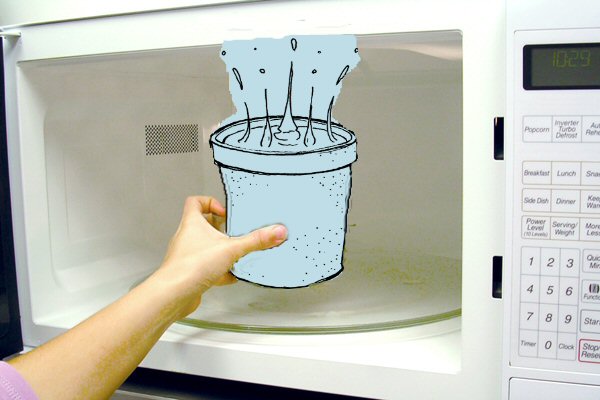Home » Simple stir stick prevents superheated explosion
Simple stir stick prevents superheated explosion
Question: I recently read a story about a boy being burned while trying to boil water in a cup in a microwave oven. When removed, the heated water in the cup was not boiling, but suddenly “blew up” into his face causing bad burns. What caused this?
Reply: Yes, this can happen under the right conditions, which hopefully would be avoided after reading this. First, let’s take a look at droplet and bubble formation. Starting with droplet formation, as in the case of rain, the water vapor (invisible gas) must be cooled to the dew point temperature. At this temperature, the vapor is ready to condense, but it won’t unless there is something on which to condense.
Droplets don’t just form spontaneously. What is needed is called hygroscopic nuclei. Without such nuclei the vapor may be supercooled, and droplets will form instantaneously when some nuclei come along, such as particles of dust, pollen, etc. In fact, one method of artificial rainmaking involves introducing minute crystals of silver iodide into clouds. (Silver iodide has a crystalline structure similar to ice.) If the water vapor in the cloud is below the dew point, the crystals act as nuclei and droplets form that grow into raindrops.
Now, let’s move on to bubbles. They, too, do not form spontaneously and require nucleation sites – a rough surface, residue, etc. You may have noticed that in a glass of carbonated beverage the bubbles generally rise from the bottom where the washing detergent has not made the glass squeaky clean.
When water is heated, as in a microwave oven, it is possible to raise the temperature above the boiling point without actually boiling the water, or to superheat it. This is particularly true in new cups or containers that do not have scratches or residue to act as nucleation sites. So, in this case, the water is more than ready to boil, and a bump or jar can bring the superheated liquid in contact with some rough places, or sites, and the water “flash boils,” releasing a lot of pent-up energy. The rising bubbles of the sudden boiling carry hot liquid with them, and the water explodes out of the cup – causing burns in some cases.
What to do? Provide nucleation sites in the heating liquid. For example, place a wooden or plastic stir stick, or perhaps a tea bag or instant coffee in the cup. Then on the other hand, you could get up a little earlier and use a teakettle to boil water.
C.P.S. (Curious Postscript): A signature always reveals a man’s character — and sometimes even his name. ~Evan Esar
See HERE for last week’s Curiosity Corner.
Curious about something? Send your questions to Dr. Jerry D. Wilson, Science Division, Lander University, Greenwood, SC, 29649, or for e-mail, jerry@curiosity-corner.net. Selected questions will appear in the Curiosity Corner. © JDW
















Give me the old time tea kettle method!!! I threw my microwave out 10 years ago and I am healthier and my food sure tastes better!!
How sad for this child.
Hey, Rob. I didn’t realize you are a scientific genius too. How, then, when the inventor of the microwave was inspired by walking past some kind of radiowave device and having a chocolate candy bar melt in his pocket, did this propell the emergence of this device?
Great post!
I have to admit, when it comes to talking about nucleation points, my friends can count on me bringing it up. Whether we’re talking about the blueberries in my blueberry beer floating up and down, or more engineering-related topics, I really do talk about this sort of stuff a little too often…
hi!there..i linked u in my blog ..please link me back..thank you!